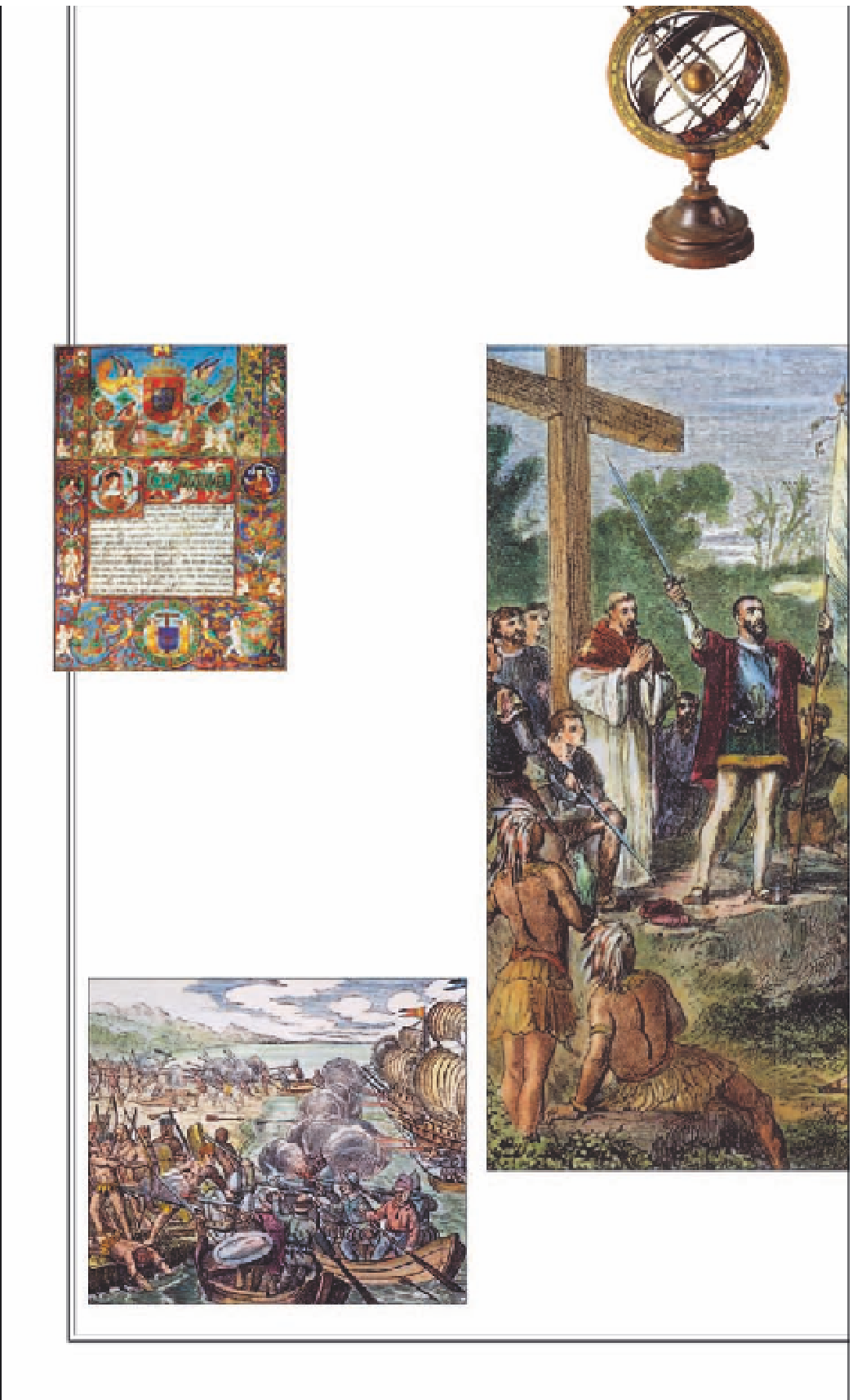Travel Reference
In-Depth Information
The Portuguese Conquest
When the Portuguese reached Brazil in 1500, their period
of maritime expansion was at its peak. In 1501, Emperor
Manuel I ordered Amerigo Vespucci to explore the new terri-
tory further, leading to the settlement of Guanabara Bay (Rio
de Janeiro). In 1530, an expedition led by Martim Alfonso de
Sousa resulted in the first colonial towns - São Vicente and
São Paulo. Preoccupied with Africa and the Far East, Portugal
neglected Brazil until 1532, when João III divided the land
into 15 captaincies. The early settlers mainly comprised impo-
verished Portuguese peasants and nobles, who were expec-
ted to explore and govern these captaincies.
Armillary sphere, a globe
used by early navigators
Manuel I (1469-1521)
An illuminated
Portuguese manuscript
features the royal coat
of arms, as well as
armillary spheres
symbolizing Emperor
Manuel's reign as
a golden age of
exploration.
Priests
also joined the
expedition, hoping to
spread Christianity in
the New World.
Cabral
erected a cross
and held a Catholic
service to signify the
ownership of Brazil.
PEDRO ÁLVARES CABRAL
The commander of the fleet sent to India by
Emperor Manuel I, Cabral accidentally landed at
Porto Seguro in southern Bahia on April 23, 1500.
The Portuguese navigator baptized the bay, where
they anchored for 10 days, Terra de Vera Cruz, or
“Land of the True Cross.” His onward voyage to
India was beset with calamities, and Cabral
finally drowned in a shipwreck a few months later.
Indigenous People meeting
the Portuguese
Initial Portuguese fleets were received by
friendly indigenous people. Gradually,
these confrontations and meetings
became more hostile in nature.





































